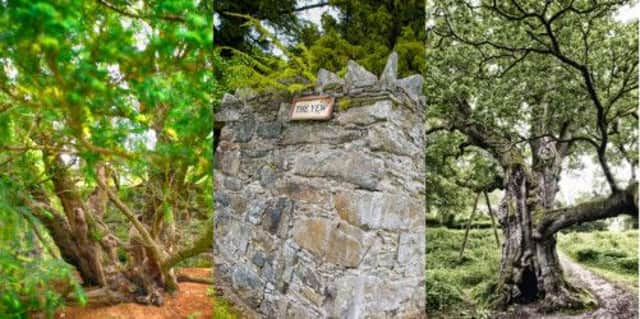100 weeks: Pontius Pilate| Birnam Wood |Meikleour


Estimated at over 5000 years old the Fortingall Yew is widely recognized as the oldest living thing in Europe, and possibly anywhere outside North America. It took root in this land centuries before the Pyramids were constructed and was approaching its first millennia when the bluestones of Stonehenge were being dragged across Salisbury Plain.
When the tree was some three thousand years old a small boy, from the nearby Roman Camp may have played and climbed in its ancient branches. Legend has it that this boy was Pontius Pilate. The story goes that in 10BC his father, a Roman envoy for Caesar Augustus, was visiting the local king Metallanus in order to persuade him to pay tribute to Rome. While here he fell under the spell of a local girl who bore him a son. The boy was given his father’s name and brought back to Rome where in time he grew up and was made a free man and given a pilateus, the cap worn by a freed slave. He would then go on to become one of the most famous, or infamous, characters in all of human history.
Advertisement
Hide AdAdvertisement
Hide AdThere is something utterly humbling when in the presence of such an ancient living thing. The Fortingall Yew will outlast every living person on this planet for generations and generations to come.


Birnam Wood
As the River Tay winds its way past Dunkeld on its eastern shore and Birnam on its western it passes close to another tree of legend – The Birnam Oak. This impressive and huge old tree is a relic from the ancient medieval Birnam Wood immortalized by Shakespeare in his play “Macbeth”.
“Macbeth shall never vainquis’d be until Great Birnam Wood to high Dunsinane Hill shall come against him”
Tradition has it that Shakespeare was inspired to write the play after visiting the area as an actor and records show that a group of English strolling players were permitted to perform in Perth in 1589 although sadly, none of their names were listed.
The first three metres of the tree are hollow and the empty bowl left behind is easily large enough to enter. Although several of its lower branches are now propped up to prevent them collapsing under their own weight the tree is healthy yet and will be around for many more years to come.
Meikleour Beech Hedge
A few miles north of Perth, just outside the village of Meikleour stands the Meikleour Beech Hedge, the tallest hedge anywhere on the planet. It is 580 yards long and averages 100 yards in height. It was laid out in the spring of 1745 to denote a boundary by Jean Mercer of Meikleour and her husband Robert Murray Nairne, who within a few short weeks would be killed fighting the Hanoverian troops at Culloden.
It is now cut and remeasured once every 10 years by which takes a group of four men 6 weeks to accomplish.
As a child we would often pass it on family days out and I was utterly and profoundly unmoved that a big hedge could ever inspire anything but teenage boredom. Now though, I like it a lot and whenever I can I try and drive past it and take great pleasure in boring my passengers as I was once bored myself...
Advertisement
Hide AdAdvertisement
Hide AdAlan McCredie began the ‘one hundred weeks of scotland’ website in October last year, and it will conclude in Autumn 2014. McCredie’s goal is to chronicle two years of Scottish life in the run-up to the independence referendum.
McCredie says ‘one hundred weeks...’ is intended to show all sides of the country over the next two years. On the site, he says: “Whatever the result of the vote Scotland will be a different country afterward. These images will show a snapshot of the country in the run up to the referendum.
“The photos will be of all aspects of Scottish culture - politics, art, social issues, sport and anything else that catches the eye.”
You can follow the project at www.100weeksofscotland.com. You can also follow Alan on Twitter.
• All pictures (c) Alan McCredie/ 100 weeks of Scotland